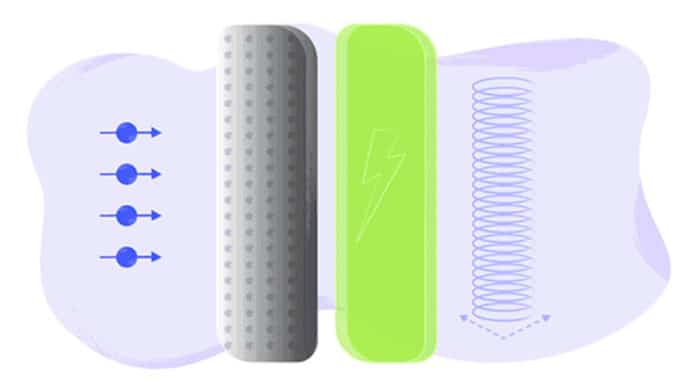Scientists from the National Institute of Standards and Technology (NIST) and Sandia National Laboratories have developed a non-destructive but penetrative method that uses neutrons to detect electric fields in unreachable spaces by conventional probes. This method could develop sensing devices that can see through walls to detect the electric fields in electronic components—a useful capability for security screening and other diagnostic applications.
Dan Hussey, a NIST physicist, said, “This is the first time anyone has been able to image an electric field that has been physically isolated. There could be something that you don’t want to disassemble but want to inspect. This approach might offer a way to see its electric fields even though barriers stand in the way.”
This technique uses an intense beam of polarized neutrons. Neutrons possess the ability to penetrate dense materials, such as metals, which block the passage of other particles or types of radiation.
Neutrons have a magnetic property called spin, which can be manipulated by a magnetic field. The neutron’s spin direction is affected by magnetism— something that scientists used for their benefit.
Hussay said, “The neutron is electrically neutral, and yet we’re using it to sense the electric field.”
Sandia physicist Yuan-Yu Jau came up with this idea. He recently started working on a Laboratory Directed Research and Development (LDRD) project to detect electric fields in spaces unreachable by conventional probes. To realize it, Jau needed a good source of neutrons and capable detectors—needs that led him to the NIST Center for Neutron Research (NCNR).
Even for the strong electric field employed in this demonstration experiment, the effective magnetic field was weak (about 50 times smaller than Earth’s magnetic field). Nevertheless, this weak magnetic field tilted the direction of the neutron’s magnetic spin slightly. In the experiments, the tilt angle was less than a degree, but using a sensitive polarimetry method developed by the team, a small rotation was measured with an accuracy of about one-hundredth of a degree.
To make precise measurements, scientists built on the NCNR’s established capabilities in polarimetry to develop a method that is about 100 times more sensitive than conventional polarimetry.
Their method relies upon the neutrons’ behavior as they go into a type of electromagnet called a solenoid, used in conjunction with a polarized neutron spin filter. This device was developed for other purposes, yet it demonstrated ideal for this exploration.
The test conditions may appear to undermine the practical value of the procedure for use in the field, as the group required an inconveniently large reactor to produce the neutron beam. Nonetheless, smaller commercially accessible neutron generators do exist, proposing that the technique may one day be harnessed by portable equipment if it could generate an intense enough beam of neutrons.
Hussey emphasized, “The results demonstrate only that the concept is valid. We didn’t leap ahead to trying to see inside metal objects, but that’s coming shortly.”
“You might want to diagnose high-voltage electronics while they’re operating, or potentially study materials that have electric properties in sample environments. Now that the capability exists, perhaps other ideas will emerge.”
Journal Reference:
- Yuan-Yu Jau et al. Electric Field Imaging Using Polarized Neutrons, Physical Review Letters (2020). DOI: 10.1103/PhysRevLett.125.110801
